We live in an era of fast-developing scientific and technological advancements. To best prepare students for modern life, the Pao School Chinese teaching team must cultivate both their traditional academic ability and artistic creativity, the latter of which is fundamental for boosting a student’s independent thinking abilities. With this in mind, the high school has started an annual Chinese Challenge Award.
After its debut this year, we were inundated with many outstanding entries to the challenge. We are, however, limited in our ability to share the works and so just a few of them are featured in this article.
I would like to take this opportunity to sincerely thank all of the high school’s Chinese teachers. Thanks to their outstanding academic skills and creative teaching design, they have not only achieved success in the classroom, but also expanded the scope of Chinese studies beyond that of the traditional learning environment. Because of this, students can think about life and art in a broader context.
—— Le Yingyu
High School Head of Chinese
Chinese as a Second Language Challenge: Video Production
Writing and comments: Stella Fu
Karen, originally from Indonesia, is a Chinese heritage student and studies IB Chinese (SL). After entering the school in Year 11, Karen’s Chinese foundation was relatively elementary, and she was timid about speaking the language. I told her that Pao School is a very open and forgiving, there is no need to worry about making mistakes and so she should try to use Chinese. As her opportunities to improve her reading were limited, she borrowed a book with Chinese stories from the classroom every week. After she read it, she would retell me the story and we would discuss it. She improved rapidly thanks to the open and inclusive environment of Pao School and her strong drive to learn. After just one semester, Karen’s Chinese was markedly better, with clear progress made in fluency, reading and writing.
At the end of the first semester of the 2019-20 academic year, Karen originally intended to only go home for winter vacation, but the outbreak of the coronavirus pandemic prevented her from returning to campus. Since then, she has been learning online with Pao School. Although online learning has certain challenges, Karen has always attended class on time, actively participated in class activities, and diligently completed all of her assignments. During this time, it was difficult for Karen to not feel anxious, as she worried her Chinese skills would regress outside of the immersive environment and that she would miss valuable opportunities living away from campus.
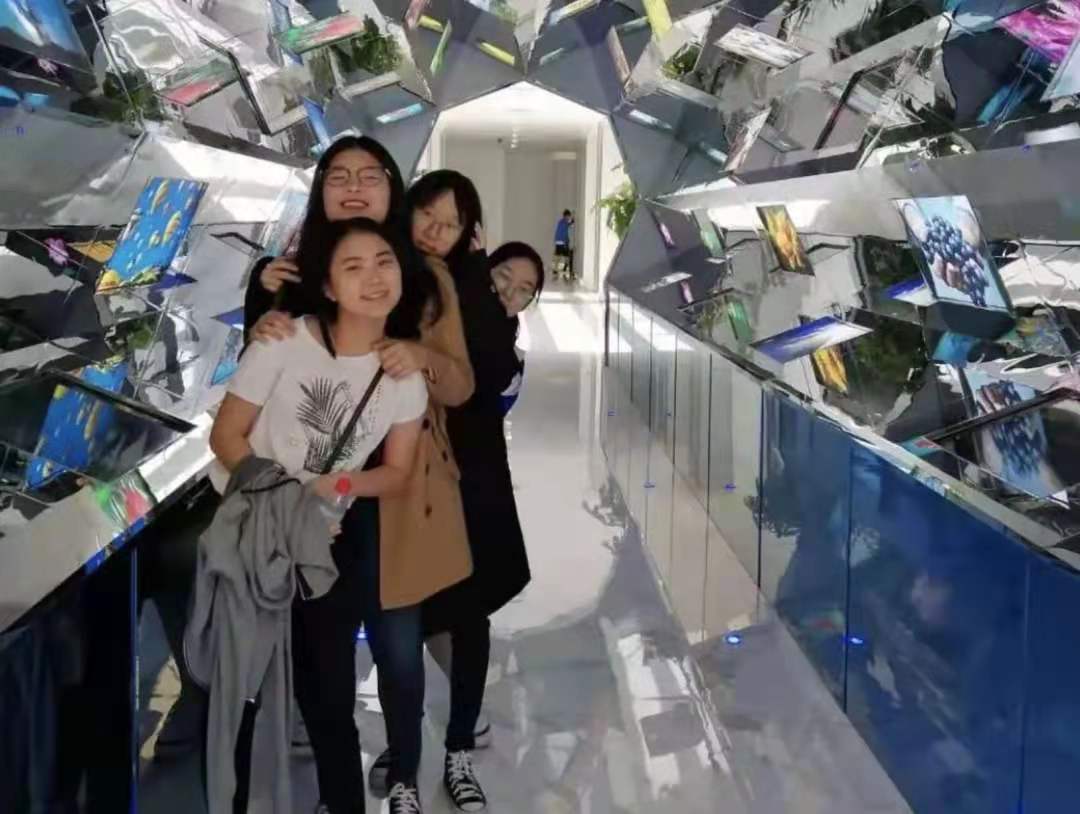
Karen (the girl in white) with her friends
For this year’s Chinese as a Second Language Challenge, the school held a video-making competition related to Chinese culture. This meant students could take part regardless of their location and time zone, whilst still feeling immersed in Chinese culture. Karen, who was preparing to graduate, told me that she wanted to make a video to introduce her hometown of Jakarta. The Indonesian capital is not only a modern international city, but also upholds strong Chinese cultural traditions. This video is a memento of her Chinese studies and a gift to her Pao School teachers and classmates.
The following video is an excerpt from Karen’s video. Please watch to follow her "virtual tour guide,” to learn about the experience of the overseas Chinese community in Indonesia!
Year 9 Challenge: Poetry Writing
(based on the teaching of Chinese literary texts)
Writing and comments: Nina Chen
“Seasons” has long been an important theme of poetry studies in the YK Pao School Chinese Department. For instance, the Chinese department previously produced two collections of student poems, "A poem for autumn" and "A poem for spring.” This year, since the Year 9 syllabus includes poetry as a part of classroom teaching, we encouraged students to write poetry with the theme of “winter,” which also became the theme of this Challenge Award.
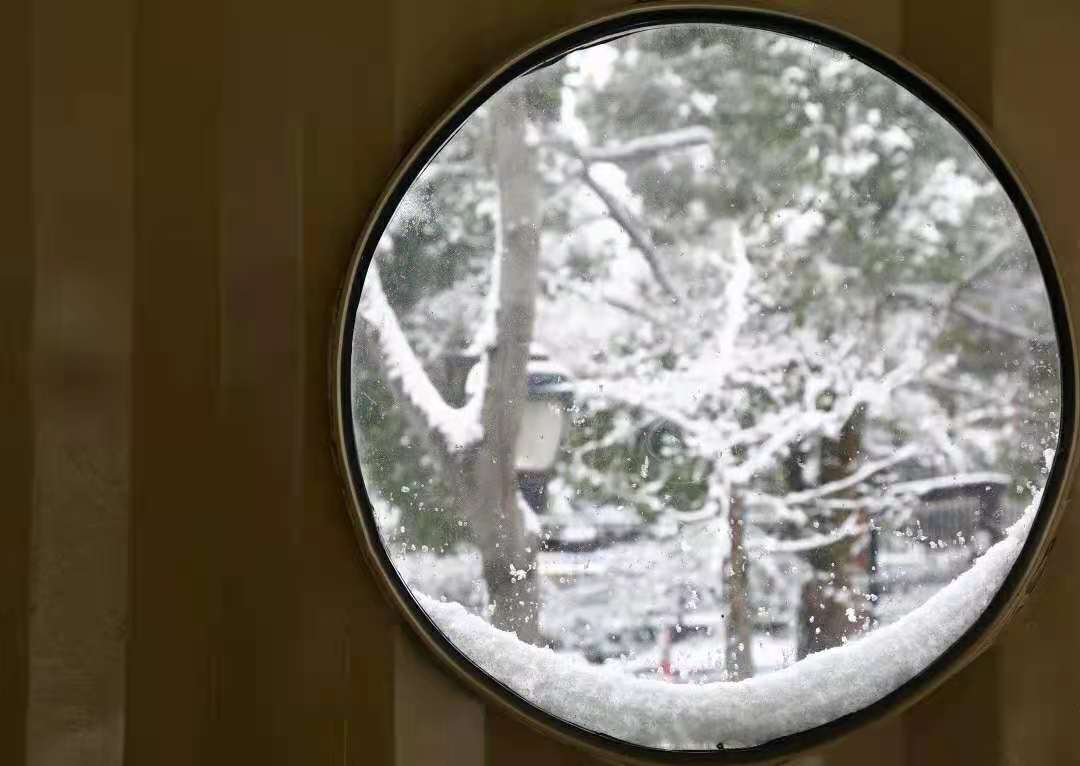
Photography by Howard (Class of 2020)
First Frost
Dora Y9
There is a cold and unfamiliar sun
It emerges from a sea of people and disappears.
Changing as morning and twilight--
Perhaps upside-down; it
Sinks and vanishes.
There is an one-eyed baby elephant
Living in my pencil case.
When I raise my head to the bottle’s mouth, it
Sometimes looks up at me.
A huge glass container
Melted by the rose of daylight
Twisted and blended into bluish gray on top.
Maybe soon
We will make a grand escape;
And I will probably be the only witness
Passing the last jar of first caramel-made frost
Evaporating as it enters the silver machine
Processed into foam and sold.
I am looking at the sun: it
Is sinking and perishing. Repeated
in the countless overdue love letters of others, but I’m just
On the stairway
Four o'clock ringing, orange snow
Flowing from the top of the glass bottle.
Teacher’s comment:
“First Frost” is a very personalized poem that includes vibrant imagery. Some of the meaning in the poem is hidden, and the style of the poem keeps readers at a certain distance; thus, readers need to take their time interpreting it to gain a good understanding. It is quite impressive that a Year 9 student is capable of such a vivid work of poetry!
The student said: "When writing this poem, I imagined that I was working on a huge oil painting or writing a fairy tale from many years ago." The student thinks the poem has prominent imagery and a flowing narrative. This imagery is reflected in the novel images in lines such as "a drop of cold and unfamiliar sun,” "huge glass container,” "caramel-made first frost,” “orange snow,” etc. Some lines focus on increasing the texture or colour of an image, followed by a sense of spatial hierarchy; for instance, the "sun" coming and going from the glass container, the "us" living in the "glass container,” the "little elephant" living in my pencil case.” The spatial hierarchy created by the poetry makes the story interesting.
Festival
Arwen Y9
In the cold winter,
the moon and the silver light scatter,
and the rain falls silently at night.
Entering a path as an airborne firecracker,
Leaving the city for country mountains.
Hot fresh soup to welcome the spring,
the hope of a thousand families for peace and stability.
Last year alone for so long,
the family now gathers in joy.
Teacher’s comment:
Arwen expresses her feelings about the Spring Festival through a seven-character rhyme poem. The poem’s creativity is illustrated by first depicting a bleak winter scene, and then contrasting that with more cheerful scenes of people returning home one after another on the eve of the Spring Festival, and the happy atmosphere of New Year’s Eve and New Year’s Day.
Given that this poem was written during the pandemic, Arwen expresses her hope for a return to normalcy (a lasting stability, or calm, in contrast to the upheaval caused by the pandemic) and at the end of the poem expresses how she cherishes family reunion time.
The creation of metrical poems is difficult for Year 9 students. However, Arwen does manage to be innovative with her relatively elementary knowledge of Chinese poetry. This shows how students’ unique feelings and innovations can be reflected in traditional Chinese poetic imagery.
Year 10 Challenge: Visual Text Creation (based on the teaching of Chinese non-literary texts)
Writing and comments: Lina Chen
This year’s Year 10 Chinese Native Language Challenge Award included teaching content from the Chinese course’s "Interpretation of Comics" module. In “Interpretation of Comics,” students had a full and lively discussion in class on the excerpts from the long comic work "Chernobyl Spring" by the well-known French cartoonist Emmanuel Lepage. They learned about different aspects of comic texts such as language features, grammatical functions, and acceptance aesthetics, and at the same time they also explored how the social circumstances of different eras can influence the styles and themes of comic works.
With the classroom learning as a foundation and combining that with their own personal interests and individual talents – such as multimedia technology ability, visual art creativity, text analysis ability – the students created some splendid works. Entries were divided into three categories: Imitation School Recommended Comic Reading List, Imitation Promotion Comic Creative Video, and Original Comic Creation and Recommendation.

Photography by Wilson (Class of 2020)
The students who made original comics all followed the realist tone of "Chernobyl Spring" and imbued a sense of humanistic care into their respective works. For example, Hedy paid attention to the phenomenon of depression that is increasingly commonplace in frequent in modern society. Mandy transformed Emmanuel Lepage’s realist work using colour contrasting. And Jennifer and Stella’s "A Bouquet of Flowers Dedicated to France" shows how war is cruel and destroys that which we hold dear.
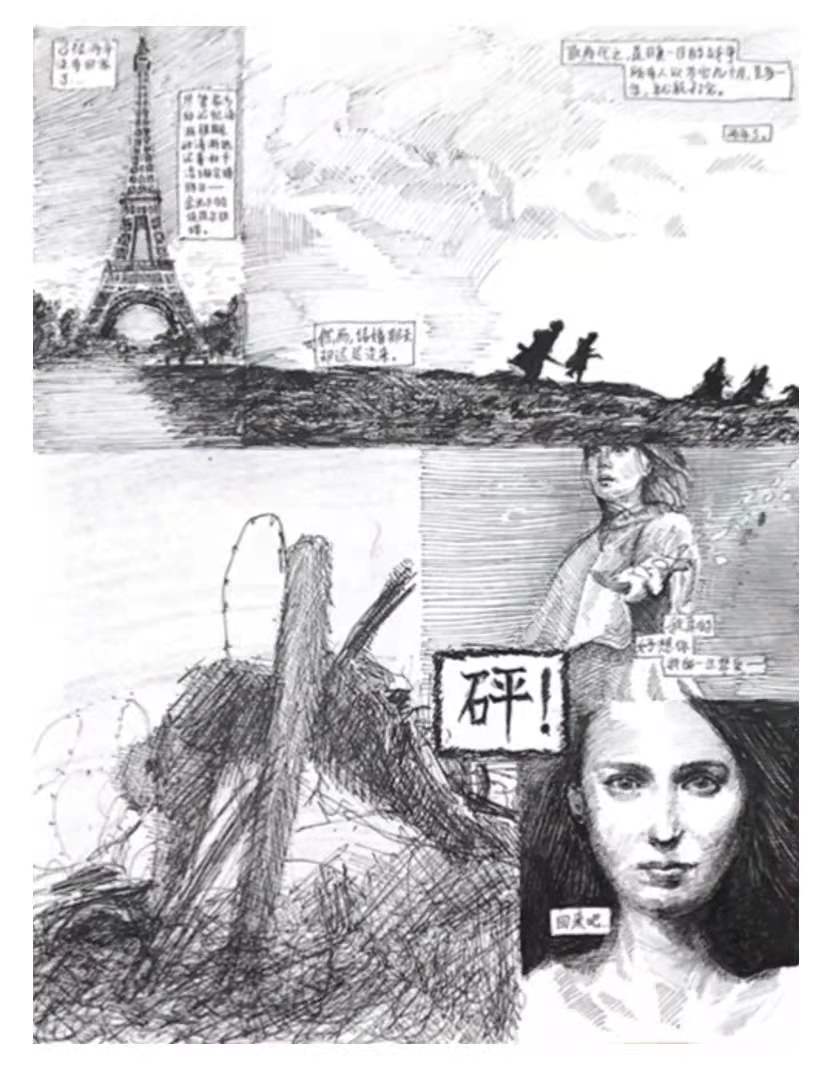
"A Bouquet of Flowers Dedicated to France"
"A Bouquet of Flowers Dedicated to France"
Stella Y10, Jennifer Y10
The comic is set in France during World War I, and the theme is love during the war. A pair of lovers are separated by the cruel war and are thinking about each other. For the complete story, please read the comic.
In the comic, the perspective of two different characters is used. The sudden change of painting style and blunt transition emphasize the separation of the two and implies that war ruthlessly divides us. However, the connection of the two perspectives reflects the sincere emotions and deep thoughts of the two.
Because comics were primarily drawn in black and white rather than colour during the early 20th century, this particular comic also is rendered in monochrome.
Let us follow in the footsteps of artists and feel both the charm of France in the early 20th century and the cruelty of World War I.
Year 11 Challenge: Canvas Bag Design
(based on Chinese literary text and non-literary text teaching)
Writing and comments: Sandy Min
After entering the IB Chinese language and literature course, Year 11 students have successively studied Cao Yu’s classic drama "Thunderstorm" and Du Fu’s poetic and historical work "Selected Du Fu Poems.” In the study of non-literary texts, the students also discussed the techniques of commenting and appreciating picture texts. Taking this as an opportunity, students were required to choose one of the classic works they have studied and creatively transform the text, present a reader’s understanding of these texts in the form of a canvas bag, and make written interpretations of their own designs.
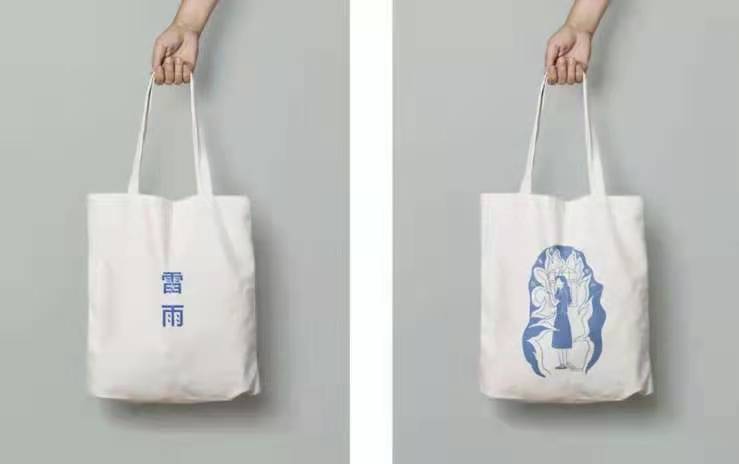
Diana’s "Thunderstorm"
Y11 Diana’s "Thunderstorm"
In this design, I tried to show Zhou Fanyi's psychological state of suffering and depression in the thunderstorm, as illustrated by her entrapment by the fire and window. With the fire image, I want to express the pressure she faces both from the external world and within: Zhou Puyuan’s cruel treatment of her; Zhou Ping’s insults and abandonment of her; the conflicting roles of mother, wife and lover; the love and hatred for Zhou Ping, and so on.
At the same time, the window also shows Fan Yi's despair and restraint. In terms of the plot, it was Fanyi who locked the window through which Zhou Ping and Sifeng escaped, signifying her determination. Here, the image of the window represents Fanyi's hope. When she closed the windows on Zhou Ping and Sifeng, she also closed her window of hope (especially for her relationship with Zhou Ping), and became ashamed of her true feelings.
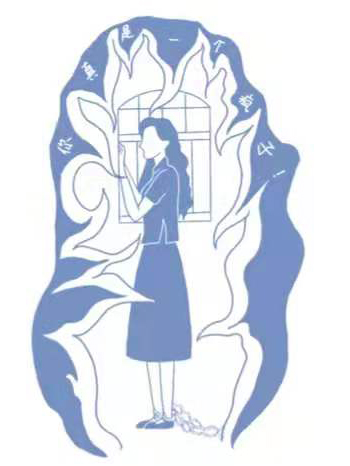
Not only did the fire and the windows trap Fanyi, the iron chain on her ankle also binds her, symbolizing the imprisonment she suffers at the hands of Zhou Puyuan. In the play, Zhou Puyuan uses Zhou Fanyi's "illness" as an excuse to keep her in the attic, but in fact puts her under house arrest, restricting her movement and freedom. Branding Zhou Fanyi as "ill" also weakened her credibility, causing others to not take her seriously.
Teacher’s comment:
Diana’s creative design is based on Cao Yu’s classic play "Thunderstorm”. The design’s colouring and composition is simple and elegant, whilst cleverly using windows as a visual metaphor. The themes of opening and closing, of being swallowed and encompassed in flames, and of being imprisoned in iron chains all express a woman’s feeling of repression and her responding resistance.
This assignment allowed the IB students to use classic pieces as a way to reflect on society and life, whilst also developing empathy and understanding for women and their experiences.
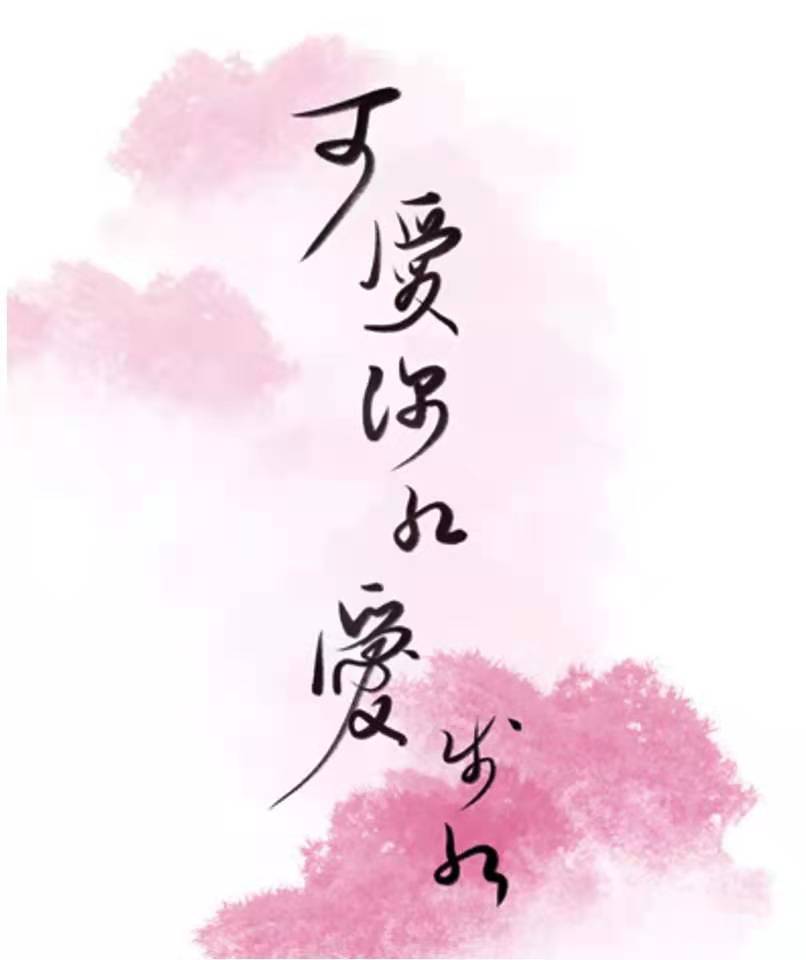
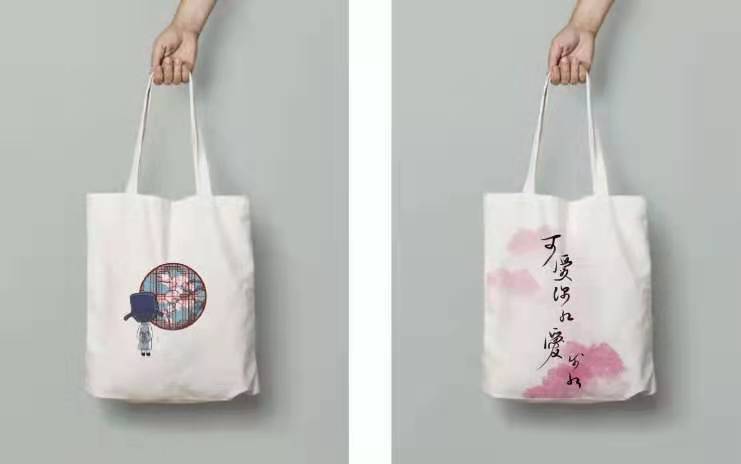
Christine Y11 and Cathy Y11"Du Fu" canvas bag design
Christine Y11 and Cathy Y11
"Du Fu" canvas bag design
Our canvas bag design has two sides, the first is a verse – “Sweet crimson, lovely pink” - from Du Fu’s poem “Strolling along the Riverside Enjoying Flowers.” The other side is our design inspired by this verse. In the design, Du Fu stands at a window to view the flowers, with his back to the audience and a faintly visible head of white hair. We chose the poem for its vibrant theme of the spring, which contrasts with his other themes of anxiety and depression.

Photography by Alex (Class of 2021)
Teacher’s comment
Christine and Cathy’s design, which was inspired by Du Fu’s poetry collection, comes from an in-depth understanding of the traditional Chinese culture and classical art. The vibrancy of Du Fu’s work, alongside his profound and novel ideas, have been very successfully interpreted in this piece.
* Thanks to the Songjiang Chinese Department for their contributions to this article